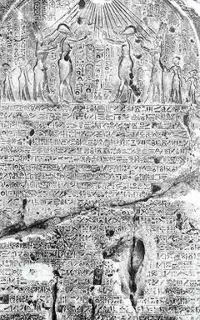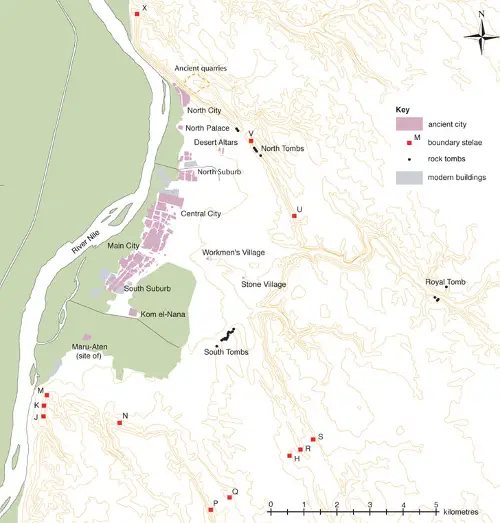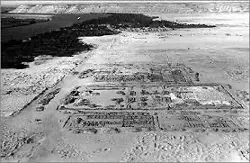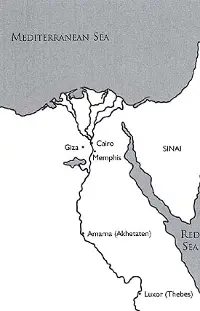Amarna: Royal City of Pharaoh Akhenaten

The city was geographically between the ancient capital of Memphis in the north and the southern capital of Thebes. Surrounding the city were 14 boundary stelae, into which were carved the story of the city's founding. Construction began in 1346 B.C. and finished five years later. Stretching for more than six miles on the east bank of the mighty River Nile, Amarna lay nestled between the shore and a number of steep cliffs. (Some stelae were carved into these cliffs.) The sprawling city had four main districts: the Central City, the North City, the Southern Suburbs, and the Outskirts. A Royal Road ran through part of the city. 
In the Central City, along the Royal Road, were the royal palace and the Great Temple (to Aten, of course). Inside the Great Temple were a series of offering tables, surrounding the altar, and a sanctuary, as well as a butcher's yard for preparing animals for sacrifice. Also along the Royal Road was the Small Aten Temple. In the Central City were a number of more bureaucratic and commercial buildings as well, including a records office, an office of works, offices for clerks, bakeries, storehouses, and a police barracks. All of these were in the general area of the King's House. The North City contained the Northern Palace, which had no roof to obscure worship of Aten. In the Southern Suburbs lived most of the more wealthy residents. 
To the North was the Palace of Nefertiti, which had a central chamber known as the "Green Room" and had, as its central feature, a number of sunken gardens. Like other cities such as Memphis, Amarna had a necropolis, which contained dozens of tombs. Near the tombs was the Workers Village. The king's tomb was in a separate place, some three miles away. 
Historians think that as many as 30,000 people lived in Akhetaten at the height of the city's settlement. The mere presence of the king proved successful irresistible for many economic interests, and the city flourished for a decade or so. Akhenaten's time on the throne was relatively short, however, and he died in 1336 B.C. His son Tutankhamen, a few years later, moved the royal capital back to Thebes and rolled back his father's religious reform, reinstating Amen as the chief god. A subsequent pharaoh, Horemheb, ordered Amarna destroyed; its ruins lay in the sand and dirt of the ages until archaeologists rediscovered it in the 18th Century. Much of what is known about Amarna comes from the Amarna Letters, a collection of correspondence between Egypt and neighboring civilizations that was discovered in the 19th Century. |
|
Social Studies for Kids
copyright 2002–2024
David White



 The famous pharaoh
The famous pharaoh 
